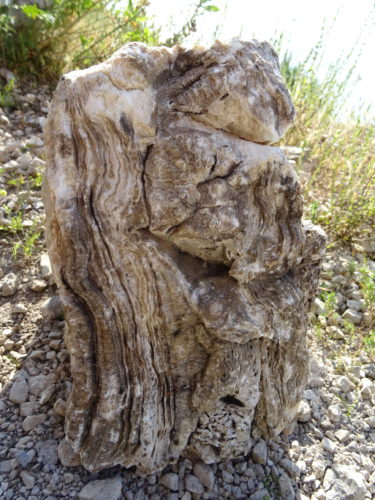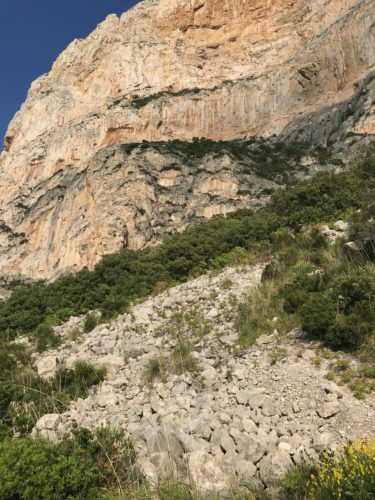The nature reserve is dominated by the relief of Monte Gallo, an isolated carbonate massif (of calcareous-dolomite type) which has a NNE – SSW trend, and connects the Gulf of Mondello with that of Sferracavallo. It consists of a slightly raised area that ends up in the peaks of Pizzo Vuturo or Avvoltoio (509 m), Pizzo della Sella (561 m) and Pizzo dello Stinco (541 m). It shows a strong relief delimited by cliffs hundreds of meters high and overlooks the “Conca d’Oro” (a plain on which the city of Palermo is located) and the Tyrrhenian Sea.
It is part of the mountains of Palermo which make up the outer segment of the Apennine-Maghrebid chain (Figure 1) characterized by different paleogeographic areas. It is a spectacular site where Upper Triassic- Eocene carbonate platform rocks and Quaternary continental to marine deposits are well exposed. It was formed after the continental collision that gave place to the mountains of Palermo, where the geometrically higher units correspond to lithotypes that derive from more internal paleogeographic domains that suffered a greater transport.

Figure 1. (a) Schematic structural map of Central Mediterranean (after Catalano et al., 2013b): (1) Corsica-Sardinian units; (2) Calabrian Arc and Kabylian; (3) Maghrebian-Sicilian-Southern Apennine nappes and deformed foreland; (4) foreland and mildly folded foreland; (5) areas with superimposed extension; (6) Plio-Quaternary volcanites. (b) Tectonic map of the Palermo Mountains and location of the study area (after Catalano et al., 2013a).
The following are some lithological, textural, structural and mineralogical features of some of the formations found in the reserve:
Coral biolithites
| hey appear in the carbonate massif of Monte Gallo and are characterized by bioliths with corals and algae, bioliths with sponges and hydrozoans, biocalcarenites, stromatolithic limestones and limestone with megalodons, carbonate rocks of gray to pearly white color, generally with indistinct and intensely stratification and fractures.
Photo: Calcareous plankton |
 |
Bioclastic limestone
 |
They consist of a superficial calcarenitic-sandy facies with intercalations of clayey and clayey-sandy levels, and an underlying layer composed by blue fossiliferous sandy clays, silt and sand. These are mostly organogeic calcarenites, yellowish and ocher-yellow to calcareous cement. The limestone appears from coarse to fine, sometimes cavernous, with remains and impressions of macrofossils.
Photo: Limestone |
Debris fans
|
It is a recent deposit of carbonate, radiolarite and travertinous nature, with sharp edges, distributed chaotically, mixed with sandy brownish silt, located at the foot of the rocky slopes with variable thicknesses. Photo: Debris fan |
 |
The coast of the Capo Gallo nature reserve is a very impressive stretch where sea currents favor the maintenance of particularly clean water. The low cliff is bordered by a type of bioconstructions, consisting of the intergrowth and fusion of thousands of shells of a gastropod mollusks, with the shape of long and tortuous calcareous tubes. The outer-edge tubes molluks belong to the species Dendropoma petraeum, while that of the innermost tubes is the Vermetus triqueter. This organogenic structure, develops horizontally at intertidal level, determines the creation of what have been defined as “trottoir”, i.e. “vermeti” sidewalks.
